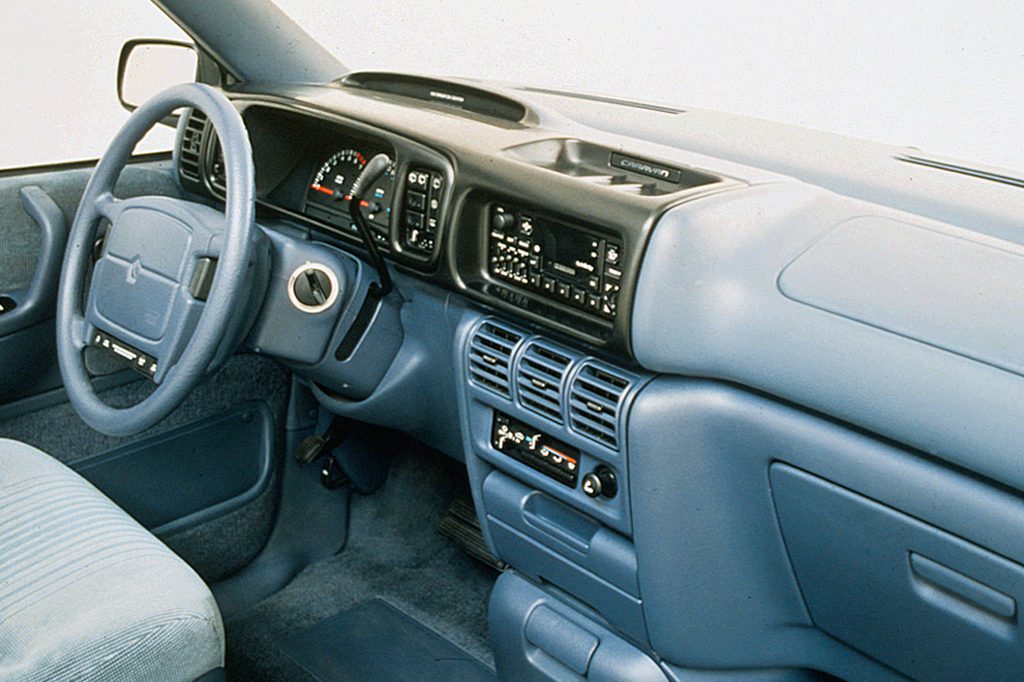| Minivan; Built in USA, Canada |
|
|
| Good condition price range: $1,000 – $2,200* |

1994 Dodge Grand Caravan ES

1993 Dodge Caravan SE

1992 Dodge Caravan C/V

1995 Dodge Caravan interior

1994 Dodge Caravan interior

1994 Dodge Caravan SE interior
| Pros: |
|
| Cons: |
|
The Caravan’s initial basic design lasted more than a decade, and most of the bugs were worked out in the first generation. With so much versatility, these vans are an exceptional secondhand value. If you’re shopping for a minivan, Caravan and its twins should be first on your list.
Overview
America’s best-selling minivans received their first major overhaul in 1991 since their debut seven years prior. The revamp included a restyled exterior, a new interior, and the addition of all-wheel-drive (AWD) models and optional antilock brakes. Later that year, Dodge added an optional driver-side airbag. Exterior dimensions were unchanged from the previous model, but the corners were rounded off and the glass area was increased. The Caravan, along with the nearly identical Plymouth Voyager, come in standard- and extended-length versions (called Grand). Also similar, the Chrysler Town & Country comes only in the long version. Seven-passenger seating (two front bucket seats, a 2-place middle bench, and a 3-person rear bench) was standard on all except the base model, which seated five.
Yearly Updates
| 1992 Caravan For 1992 Dodge made the driver-side airbag standard on all models. Also on the safety front, they offered an optional bench seat with a pair of integrated child (20-40 lb.) safety seats. |
| 1993 Caravan Front shoulder belts were given a height-adjustable mounting point; and on vehicles with middle bucket seats, the right bucket tilts forward to ease entry/exit. |
| 1994 Caravan The Caravan was given a standard passenger-side airbag in 1994, to go along with the driver-side airbag. Dodge also added side door guard beams. With the addition of the second airbag, the dashboard was redesigned. All-wheel drive was now limited to Grand models, but antilock brakes were available on all models except the base. On the outside, Caravans sported new bumpers and bodyside moldings. |
| 1995 Caravan In the final year for the current design, the Caravan received only a few trim and option package changes. |
